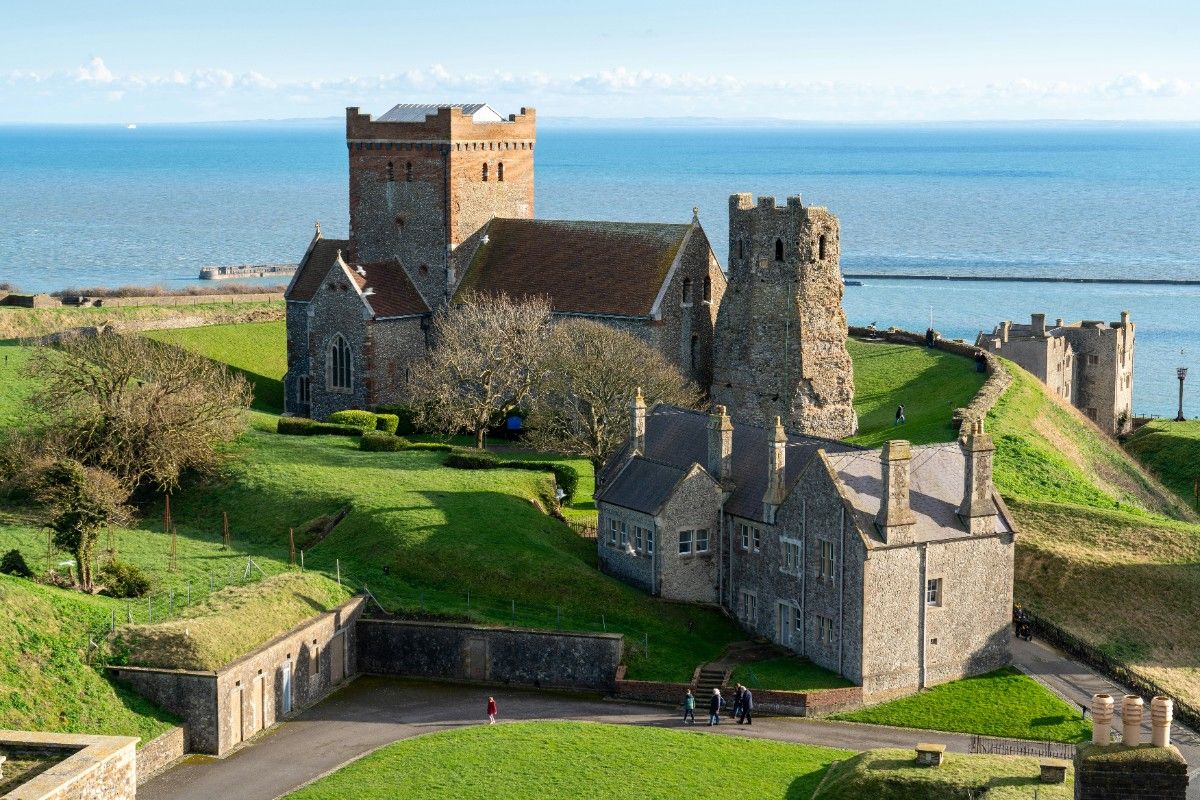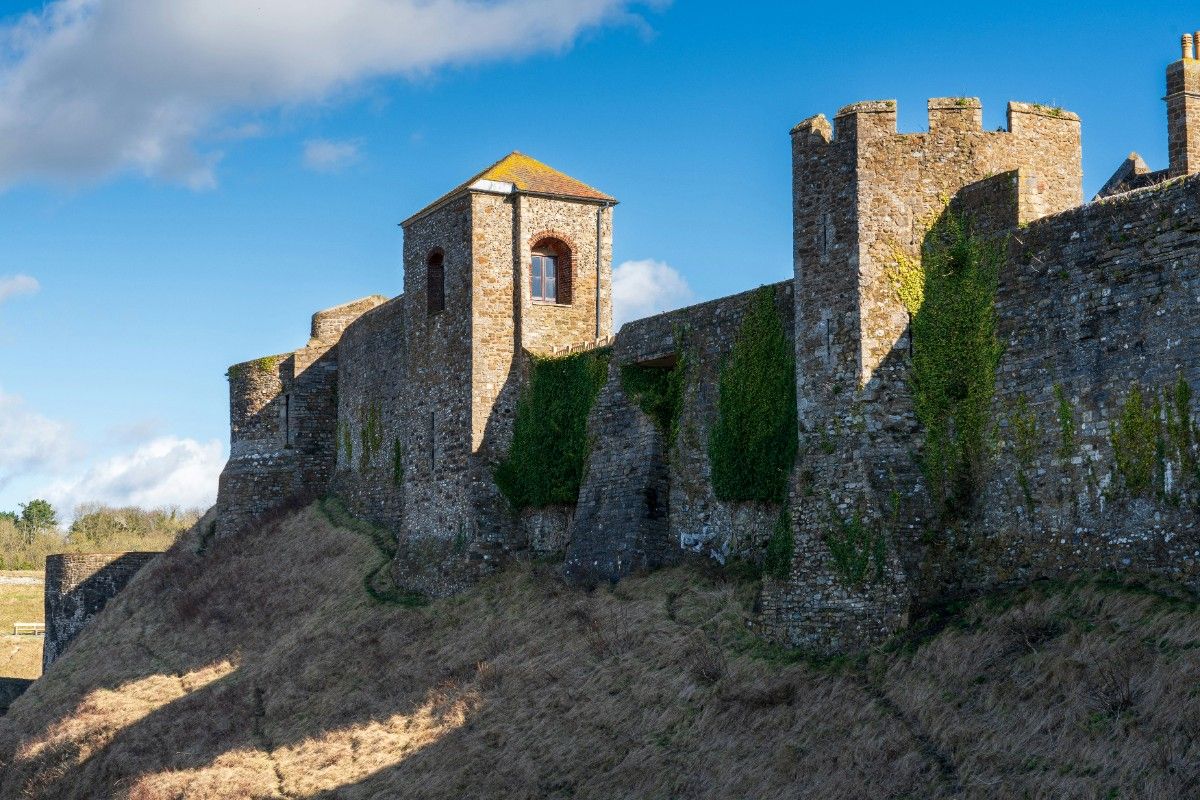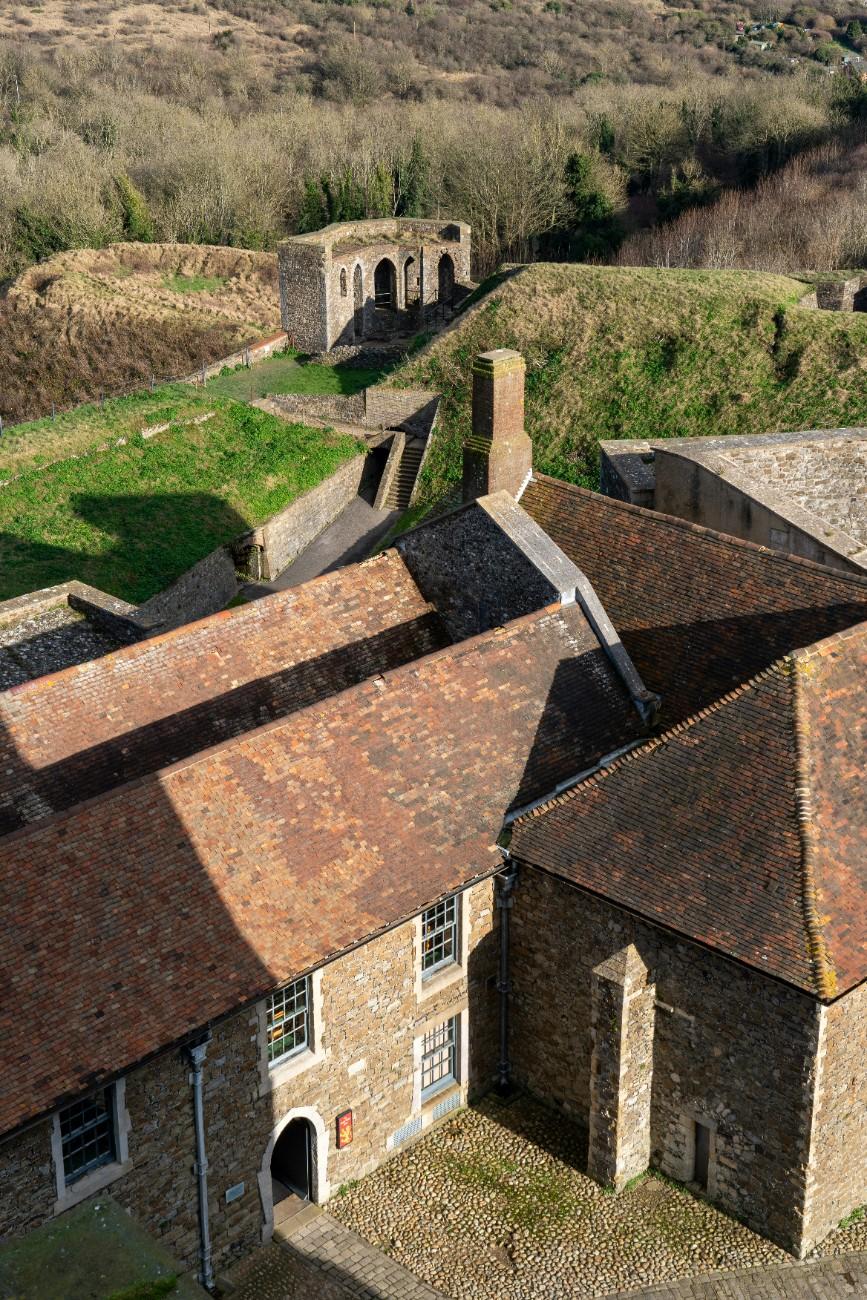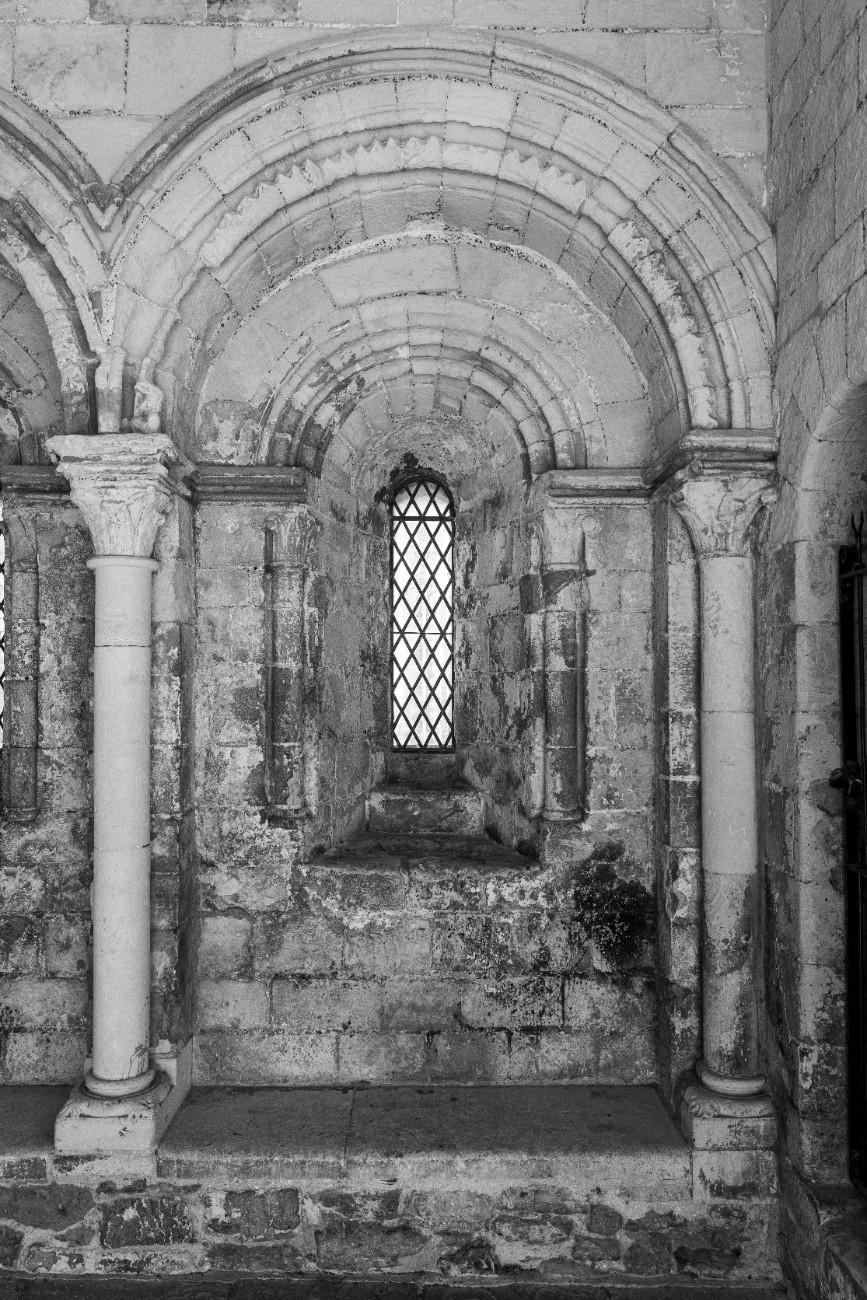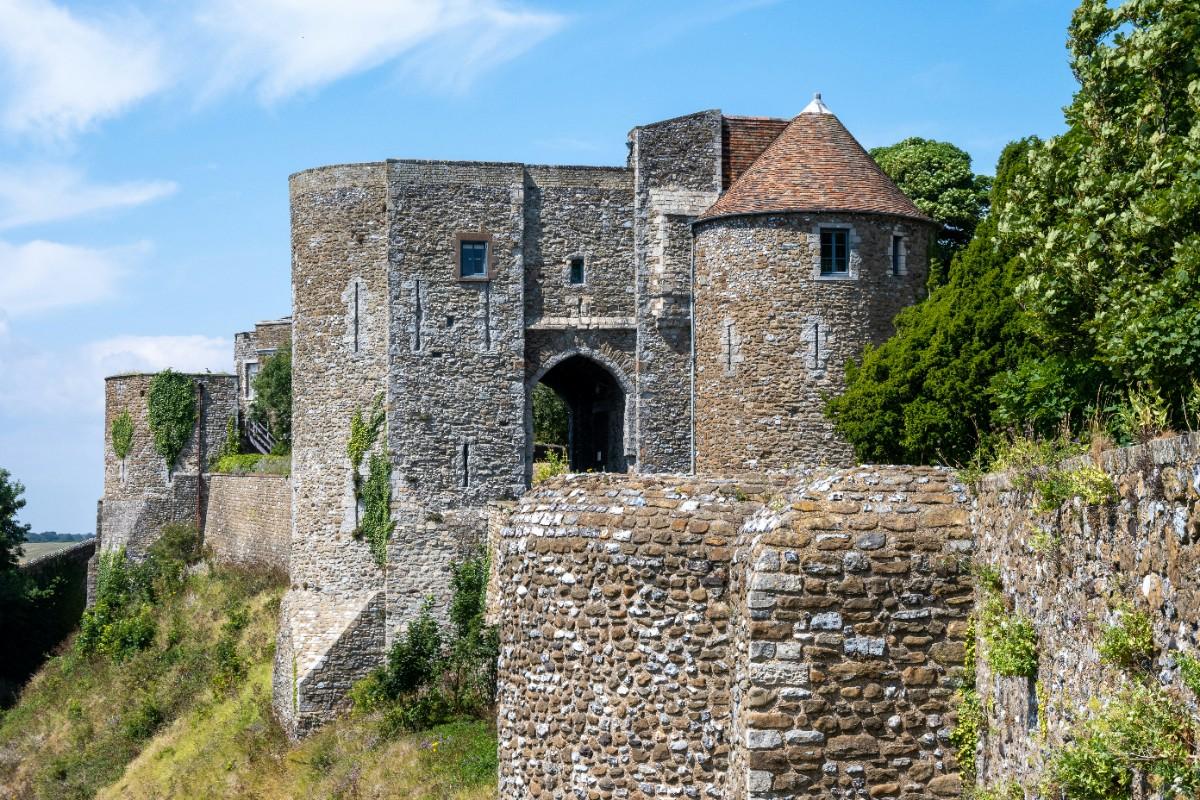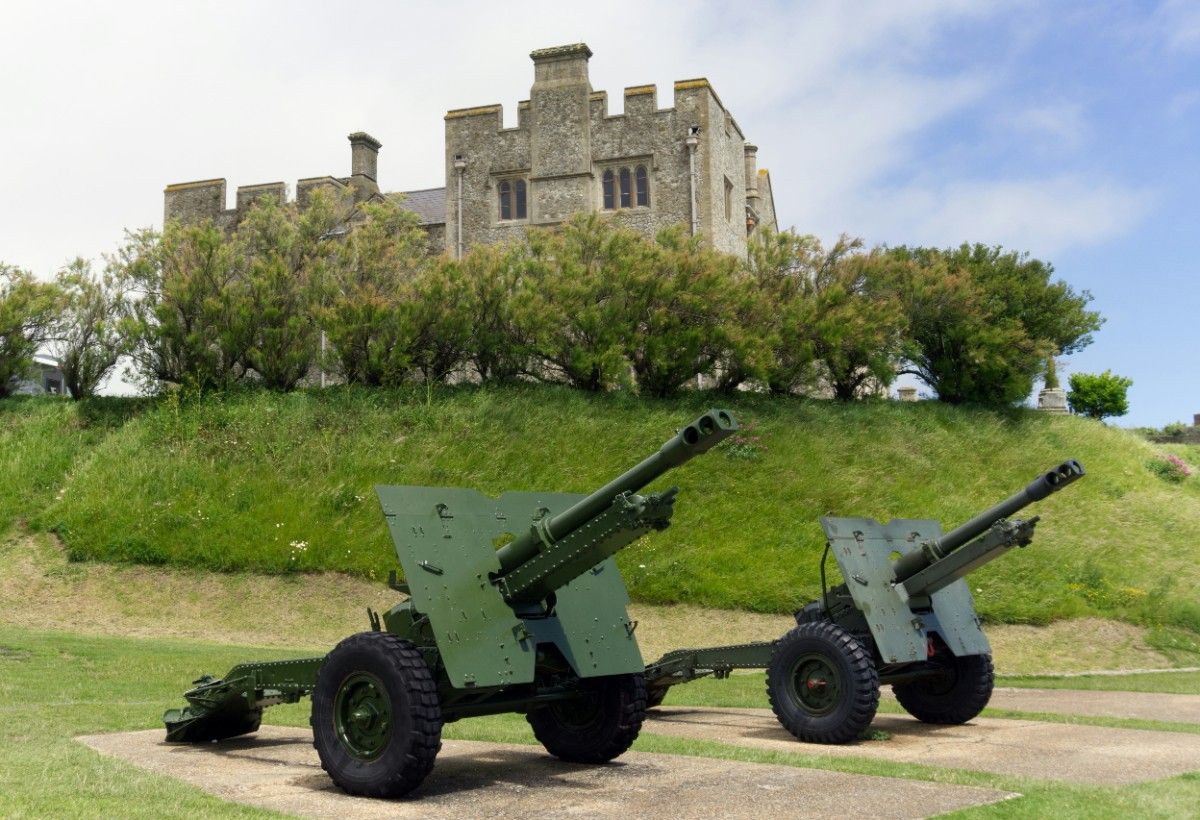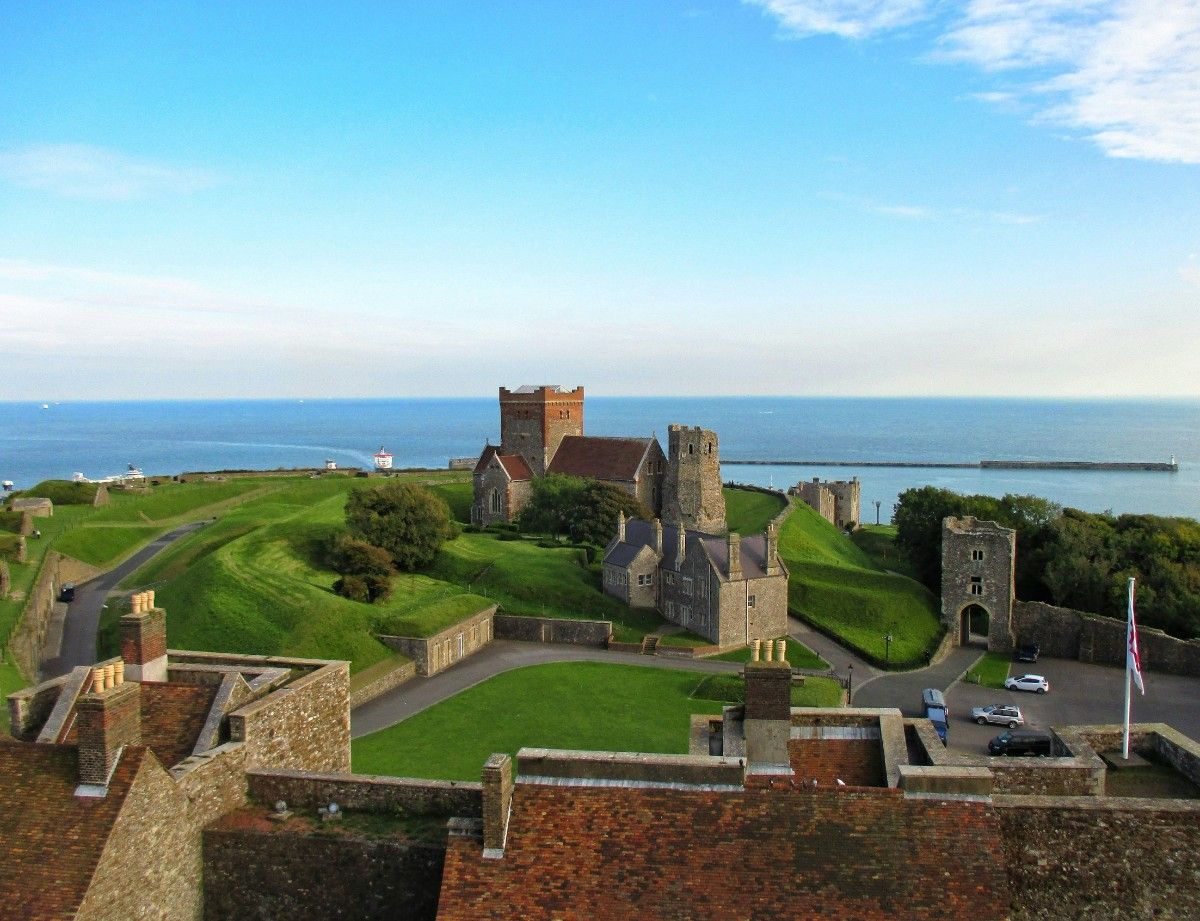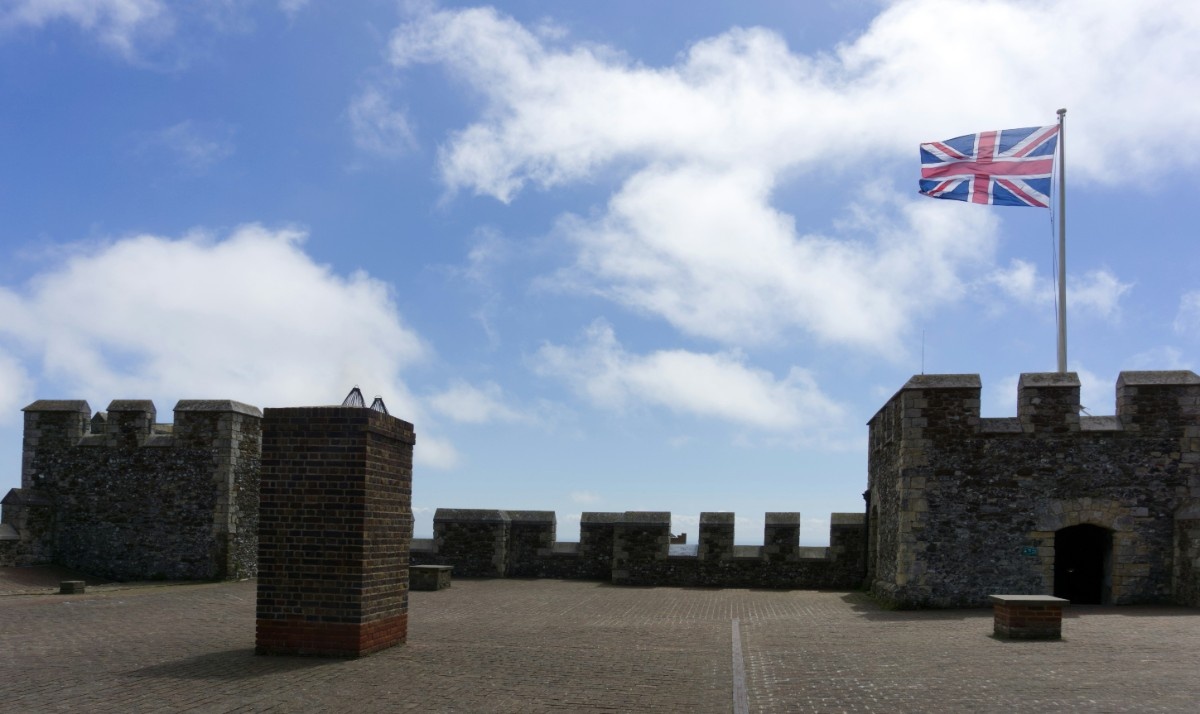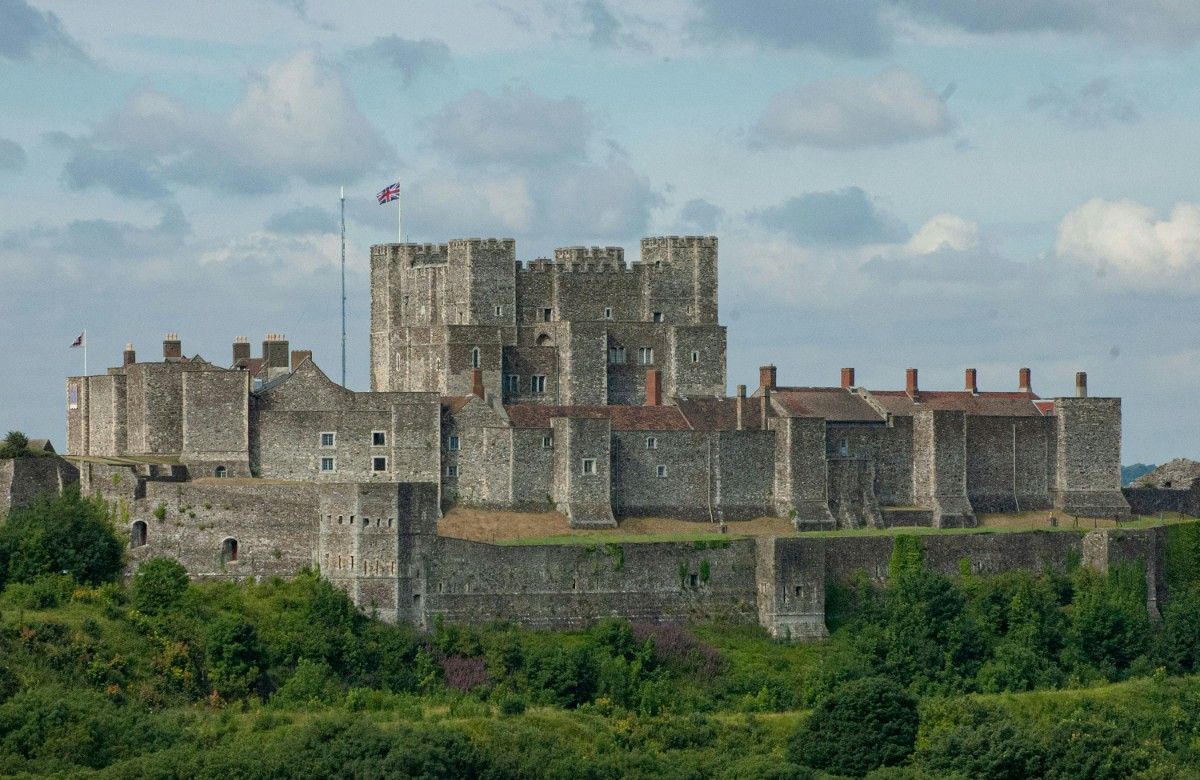Introduction to Dover Castle
An Iconic Landmark on the White Cliffs
Perched atop the iconic White Cliffs of Dover, overlooking the English Channel, stands the majestic Dover Castle. This formidable fortress has been a witness to over 2,000 years of British history, making it one of the most significant historical landmarks in England. The castle's strategic location in Kent has played a crucial role in defending the country from invaders, earning it the nickname "Key to England."
A Journey Through Time
From its humble beginnings as an Iron Age hillfort to its transformation into a grand medieval castle and its role in World War II, Dover Castle has countless stories to tell. Visitors from all over the world flock to this enchanting site to explore its vast grounds, uncover its secrets, and immerse themselves in the rich tapestry of British history. Whether you're a history enthusiast, a family looking for an educational adventure, or simply seeking a day out in the picturesque Kent countryside, a visit to Dover Castle promises to be an unforgettable experience.
Exploring the Castle Grounds
Dover Castle boasts an impressive array of attractions, including the Great Tower, the Roman Lighthouse, the medieval tunnels, and the Wartime Tunnels. Each of these features offers a unique glimpse into different periods of the castle's history, from the opulence of medieval royal life to the strategic importance of the site during World War II. Visitors can explore the castle's interior, marvelling at the intricately decorated rooms and immersing themselves in the authentic atmosphere of a medieval fortress.
Planning Your Visit
To make the most of your visit to Dover Castle, it's essential to plan ahead. This comprehensive guide will provide you with all the information you need, including details on Dover Castle tickets, opening times, admission prices, and parking facilities. We'll also delve into the castle's fascinating history, explore its stunning architecture, and highlight the must-see attractions that make Dover Castle a true gem of English heritage. So, whether you're planning a day trip or a longer stay in the area, read on to discover the wonders of this iconic landmark.
The History of Dover Castle
Early Beginnings: From Iron Age to Roman Times
The history of Dover Castle spans over two millennia, with the site's strategic importance recognised as early as the Iron Age. During this period, a hillfort was constructed on the towering cliffs overlooking the English Channel, taking advantage of the natural defences provided by the landscape. The Romans later built a lighthouse on the site, which still stands today, making it one of the oldest surviving buildings in Britain. This ancient structure serves as a testament to the enduring significance of Dover as a key location in the country's defence.
The Norman Conquest and the Medieval Era
Following the Norman Conquest in 1066, the castle began to take shape under the rule of William the Conqueror. Over the centuries, successive kings and queens left their mark on Dover Castle, transforming it into the impressive fortress we see today. During the medieval period, the castle underwent significant expansions and improvements, with Henry II building the imposing Great Tower, which served as a grand royal palace, and strengthening the castle's defences. The castle's medieval tunnels, known as the "Dover Castle Medieval Tunnels," were also created during this time, serving as a secret escape route for the royals in case of an attack.
Siege, War, and Resilience
Throughout its long history, Dover Castle has faced numerous challenges, including sieges, attacks, and rebuilding efforts. The castle has withstood invasions by the French, played a pivotal role in the English Civil War, and even served as a prison for prisoners of war. Despite these trials, the castle has demonstrated remarkable resilience, adapting to changing circumstances and continuing to serve as a vital defensive stronghold for the nation.
World Wars and Modern Times
In more recent history, Dover Castle played a significant role in both World Wars. During World War I, it served as a military headquarters and a hospital for wounded soldiers. However, it was during World War II that the castle's tunnels truly proved their worth. The tunnels were converted into a secret command centre, where the dramatic rescue of British and French troops from Dunkirk, known as Operation Dynamo, was orchestrated. The tunnels also housed an underground hospital, where countless lives were saved. Today, Dover Castle stands as a monument to the bravery and determination of those who have defended England throughout the centuries, offering visitors a unique opportunity to explore this fascinating history firsthand.
Exploring the Castle Grounds
The Great Tower: A Symbol of Royal Power
At the heart of Dover Castle stands the magnificent Great Tower, a symbol of royal power and grandeur. Built by Henry II in the 12th century, this impressive structure offers visitors a glimpse into the opulent lifestyle of medieval kings and queens. As you explore the interior of the Great Tower, you'll discover lavishly decorated rooms, such as the King's Chamber and the Guest Hall, which have been carefully restored to their former glory. The tower's intricate architectural details and rich furnishings provide a fascinating insight into the tastes and preferences of the medieval elite, making it a must-see attraction for anyone visiting Dover Castle.
Roman Lighthouse: A Beacon of Ancient History
One of the most striking features of the castle grounds is the Roman Lighthouse, which stands as a testament to the site's ancient history. Dating back to the 1st century AD, this lighthouse is one of the oldest surviving buildings in Britain, offering a rare glimpse into the Roman occupation of the area. As you climb to the top of the lighthouse, you'll be rewarded with stunning views of the English Channel and the surrounding landscape, providing a unique perspective on the castle's strategic location and its enduring importance throughout history.
Medieval Tunnels: Secrets Beneath the Castle
No visit to Dover Castle would be complete without exploring the atmospheric medieval tunnels, known as the "Dover Castle Medieval Tunnels." These secret passages, carved deep into the cliffs, served as an escape route for the royals during times of siege and conflict. As you navigate the tunnels, you'll discover fascinating stories of bravery, ingenuity, and survival, brought to life through interactive displays and expert guided tours. The tunnels offer a unique and immersive experience, allowing visitors to step back in time and imagine the challenges faced by those who once relied on these hidden passages for their safety and security.
Wartime Tunnels: Echoes of World War II
For those interested in more recent history, the Wartime Tunnels at Dover Castle are an absolute must-see. These tunnels played a crucial role during World War II, serving as a command centre for the British military and an underground hospital for wounded soldiers. As you explore the tunnels, you'll discover the stories of the men and women who worked tirelessly to coordinate the defence of the nation and care for those injured in the conflict. The Wartime Tunnels offer a poignant and educational experience, highlighting the castle's enduring significance in times of war and peace.
Visiting Information - Tickets, Opening Times, and Admission Prices
Planning Your Visit: Tickets and Admission Prices
When planning your visit to Dover Castle, it's essential to understand the ticketing options and admission prices to make the most of your experience. Dover Castle tickets can be purchased online in advance through the English Heritage website, offering a convenient and hassle-free way to secure your entry. Advance online booking also provides a 10% discount on the standard ticket prices, making it an attractive option for budget-conscious visitors. As of 2021, the standard adult admission price for Dover Castle is £22.00, while children aged 5-17 can enter for £13.20. Family tickets, which grant entry for two adults and up to three children, are also available for £57.20. English Heritage members can enjoy free entry to the castle as part of their membership benefits.
Opening Times: Planning Your Day at the Castle
To ensure that you have ample time to explore the vast castle grounds and its many attractions, it's crucial to familiarise yourself with the Dover Castle opening times. From April to October, the castle is open from 10:00 am to 6:00 pm, with last admission at 5:00 pm. During the winter months, from November to March, the castle operates shorter hours, typically from 10:00 am to 4:00 pm, with last admission at 3:00 pm. It's important to note that these hours are subject to change, so it's always advisable to check the official English Heritage website for the most up-to-date information before planning your visit.
Exploring the Castle: Suggested Itineraries
With so much to see and do at Dover Castle, it can be helpful to have a suggested itinerary to ensure that you make the most of your visit. For those short on time, a half-day itinerary might include exploring the Great Tower, the Roman Lighthouse, and the Medieval Tunnels, while a full-day itinerary could also incorporate the Wartime Tunnels and the castle's extensive grounds and gardens. To enhance your experience, consider joining one of the guided tours offered by the castle's knowledgeable staff, or renting an audio guide to provide additional insights and information as you explore the site at your own pace.
Accessibility and Facilities
Dover Castle is committed to providing an enjoyable and accessible experience for all visitors, regardless of their mobility needs or requirements. The castle offers a range of facilities and services to ensure that everyone can make the most of their visit, including accessible toilets, baby-changing facilities, and a mobility bus service for those who require assistance navigating the expansive castle grounds. Visitors with disabilities are entitled to reduced admission prices, and carers can enter the site free of charge when accompanying a disabled visitor. To ensure a smooth and comfortable visit, it's advisable to check the castle's accessibility information in advance and contact the staff with any specific questions or requirements you may have.
Getting to Dover Castle and Parking Facilities
Arriving by Car: Directions and Parking
For those planning to drive to Dover Castle, the journey is straightforward and well-signposted. The castle is located just off the A2 and A258, and is clearly marked on road signs. If you're using a sat-nav, the postcode to enter is CT16 1HU. Upon arriving at the castle, you'll find ample parking facilities available, making it convenient for visitors to park their vehicles and begin their exploration of the site. The Dover Castle car park is situated at the base of the castle hill, just a short walk from the main entrance. The car park is pay-and-display, with charges starting from £2.50 for up to two hours, making it an affordable option for those planning a shorter visit. For visitors intending to spend the entire day at the castle, all-day parking is available for just £5.00, providing excellent value for money.
Public Transportation: Trains and Buses
If you prefer to travel by public transportation, Dover Castle is well-connected by both train and bus services. The nearest train station to the castle is Dover Priory, which is served by regular trains from London Victoria and London Charing Cross, as well as other major cities in the south-east of England. From Dover Priory station, you can either take a short taxi ride or embark on a scenic 25-minute walk uphill to reach the castle entrance. Alternatively, you can catch the number 16 bus from the station, which will drop you off near the castle. For those arriving by bus, several services stop near Dover Castle, including the number 15 and 61 buses from Dover town centre. Additionally, the castle is well-served by local tour operators and sightseeing buses, which offer convenient packages that include transportation and entry to the castle, making it an easy and stress-free option for visitors.
Accessibility and Mobility Assistance
Dover Castle is committed to ensuring that all visitors, regardless of their mobility needs, can enjoy the site to the fullest. The castle offers a range of facilities and services to assist visitors with limited mobility, including disabled parking spaces in the car park, accessible toilets, and a mobility bus service that operates within the castle grounds. The mobility bus service is available to transport visitors from the car park to the main entrance, as well as between various key attractions within the castle complex. For visitors with specific accessibility requirements, it is advisable to contact the castle in advance to discuss your needs and ensure that appropriate arrangements can be made to facilitate your visit. The friendly and knowledgeable staff at Dover Castle are always happy to assist visitors with any questions or concerns they may have, ensuring that everyone can enjoy a comfortable and memorable experience at this iconic historical site.
The Great Tower and Medieval Interiors
Stepping Back in Time: Exploring the Great Tower
At the heart of Dover Castle stands the impressive Great Tower, a magnificent medieval palace that offers visitors a glimpse into the opulent world of English royalty. Built by Henry II in the 12th century, this imposing structure has been carefully restored to its former glory, allowing visitors to experience the grandeur and splendour of the medieval era. As you step inside the Great Tower, you'll be transported back in time, immersed in the rich tapestry of colours, textures, and intricate details that adorn every room. From the lavish furnishings and ornate decorations to the authentic artifacts and interactive displays, every element of the Great Tower has been meticulously designed to provide visitors with an authentic and engaging experience of medieval life.
The King's Chamber and Guest Hall: Luxury and Hospitality
One of the highlights of the Great Tower is the King's Chamber, a sumptuous room that would have been reserved for the most important guests of the royal court. As you enter the chamber, you'll be struck by the sheer opulence of the furnishings, from the richly embroidered tapestries that adorn the walls to the intricately carved wooden furniture that fills the space. The King's Chamber offers a fascinating insight into the luxury and refinement that characterised the lives of medieval monarchs, showcasing the finest craftsmanship and materials of the era. Another key area of the Great Tower is the Guest Hall, where visiting dignitaries and nobles would have been entertained and hosted by the king. This grand space is dominated by a magnificent fireplace, around which guests would have gathered to dine, drink, and socialise, forging alliances and political connections that shaped the course of English history.
The Medieval Kitchen: A Feast for the Senses
No visit to the Great Tower would be complete without exploring the Medieval Kitchen, a fascinating area that offers a unique insight into the culinary traditions and practices of the medieval era. As you enter the kitchen, you'll be greeted by the sights, sounds, and smells of authentic medieval cooking, with costumed interpreters demonstrating the techniques and ingredients used to prepare elaborate feasts for the royal court. From the roaring fires and bubbling cauldrons to the vast array of herbs, spices, and exotic ingredients on display, the Medieval Kitchen is a feast for the senses, providing a tantalising glimpse into the gastronomic delights of the medieval world. Visitors can even sample authentic medieval dishes, prepared using traditional recipes and cooking methods, offering a truly immersive and memorable experience of the castle's rich culinary heritage.
Interactive Displays and Living History
One of the most engaging aspects of exploring the Great Tower and its medieval interiors is the range of interactive displays and living history demonstrations that bring the past to life. Throughout the tower, visitors will encounter costumed interpreters who are passionate about sharing their knowledge and expertise, offering fascinating insights into the daily lives, customs, and beliefs of medieval people. From the intricate embroidery and weaving demonstrations in the Queen's Chamber to the lively music and dance performances in the Guest Hall, these engaging activities provide visitors with a unique and hands-on experience of medieval culture and society. For younger visitors, there are also a range of interactive games, puzzles, and dressing-up activities that encourage them to explore and engage with the castle's rich history in a fun and accessible way, making the Great Tower a must-see attraction for families and history enthusiasts alike.
The Wartime Tunnels and Dover Castle's Role in World War II
Beneath the Surface: Exploring the Wartime Tunnels
One of the most fascinating and poignant aspects of Dover Castle's history is its role in World War II, particularly the dramatic events surrounding the Dunkirk evacuation in 1940. As you descend into the depths of the castle's Wartime Tunnels, you'll be transported back to a time of unimaginable courage, sacrifice, and resilience. These subterranean passages, originally built as a secret escape route for medieval royalty, were transformed into a command centre and underground hospital during the war, playing a crucial role in the Allied war effort. As you navigate the winding tunnels, you'll encounter a series of immersive exhibits and displays that bring the stories of the men and women who lived and worked here vividly to life, offering a deeply moving and thought-provoking experience that will stay with you long after your visit.
Operation Dynamo: The Miracle of Dunkirk
One of the most significant events in the history of Dover Castle during World War II was the evacuation of British and Allied troops from the beaches of Dunkirk in May 1940. Codenamed Operation Dynamo, this daring rescue mission saw the successful evacuation of over 338,000 soldiers from the shores of France, under constant threat from German forces. The Wartime Tunnels at Dover Castle played a vital role in coordinating this complex operation, serving as a command centre for the Royal Navy, Army, and Air Force. As you explore the tunnels, you'll discover the incredible stories of the men and women who worked tirelessly to ensure the success of the evacuation, from the military strategists and communications officers to the civilian volunteers who risked their lives to help bring the troops home safely.
The Underground Hospital: Saving Lives Beneath the Castle
In addition to serving as a command centre, the Wartime Tunnels at Dover Castle also housed an underground hospital during World War II, providing critical medical care to wounded soldiers and civilians. As you make your way through the hospital ward, you'll gain a powerful insight into the challenges and triumphs of wartime medicine, from the primitive conditions and limited supplies to the incredible skill and dedication of the doctors, nurses, and medical staff who worked here. The hospital exhibit features a range of authentic artifacts and equipment, as well as poignant personal stories and accounts from those who experienced the horrors of war firsthand. Through these compelling displays, visitors can gain a deeper appreciation for the bravery and sacrifice of the men and women who served at Dover Castle during this pivotal moment in history.
Remembrance and Reflection: The Legacy of Dover Castle in Wartime
As you emerge from the Wartime Tunnels and reflect on the experiences of those who lived and worked here during World War II, it's impossible not to be moved by the profound significance of Dover Castle in the history of modern Britain. The castle's role in Operation Dynamo and the wider war effort stands as a testament to the resilience, courage, and determination of the British people in the face of unimaginable adversity. Today, the Wartime Tunnels serve not only as a fascinating visitor attraction but also as a poignant memorial to the sacrifices made by so many during this dark chapter in history. By preserving and sharing these stories with future generations, Dover Castle ensures that the legacy of those who served here will never be forgotten, inspiring visitors from all walks of life to reflect on the enduring values of freedom, democracy, and human spirit that triumphed over the forces of tyranny and oppression.
Conclusion and Final Thoughts
A Timeless Testament to British History and Heritage
As we conclude our exploration of Dover Castle, it's clear that this remarkable site stands as a timeless testament to the rich history and heritage of Britain. From its ancient origins as an Iron Age hillfort to its pivotal role in World War II and beyond, the castle has borne witness to countless moments of triumph, tragedy, and transformation, each leaving an indelible mark on the fabric of the nation's story. Through its soaring towers and sprawling grounds, its opulent interiors and atmospheric tunnels, Dover Castle invites visitors to step back in time and experience the sweep of British history in a way that is both deeply personal and profoundly universal. Whether you're marvelling at the grandeur of the Great Tower, reflecting on the poignant stories of the Wartime Tunnels, or simply enjoying the breathtaking views from the castle walls, a visit to Dover Castle promises to be an unforgettable journey through the ages.
Preservation and Education: Safeguarding the Castle for Future Generations
Of course, the enduring significance of Dover Castle is not simply a matter of its past, but also its present and future. Today, the castle stands as a vital centre of preservation, education, and community engagement, working tirelessly to safeguard this irreplaceable piece of British heritage for generations to come. Through ongoing conservation efforts, innovative educational programs, and dynamic public events, the dedicated staff and volunteers at Dover Castle ensure that the site remains a vibrant and relevant part of the cultural landscape, inspiring visitors of all ages and backgrounds to connect with the rich tapestry of British history in new and meaningful ways. By supporting these efforts through our visits, our membership, and our advocacy, we can all play a part in ensuring that the castle continues to thrive as a source of learning, inspiration, and delight for centuries to come.
An Invitation to Explore, Discover, and Imagine
Ultimately, the magic of Dover Castle lies not just in its grand edifices and storied past, but in the way it sparks the imagination and ignites the spirit of all who pass through its gates. Whether you're a history buff, a family seeking a fun and educational day out, or simply a curious traveller looking to explore one of England's most iconic landmarks, Dover Castle offers a wealth of opportunities to explore, discover, and imagine. So why not plan your visit today and experience the wonder of this timeless treasure for yourself? With its rich history, stunning architecture, and breathtaking setting, Dover Castle promises to be an unforgettable adventure that will leave you inspired, enlightened, and utterly enchanted.
Related Articles

Let us know you agree to cookies
We use marketing, analytical and functional cookies as well as similar technologies to give you the best experience. Third parties, including social media platforms, often place tracking cookies on our site to show you personalised adverts outside of our website.
We store your cookie preferences for two years and you can edit your preferences via ‘manage cookies’ or through the cookie policy at the bottom of every page. For more information, please see our cookie policy.
